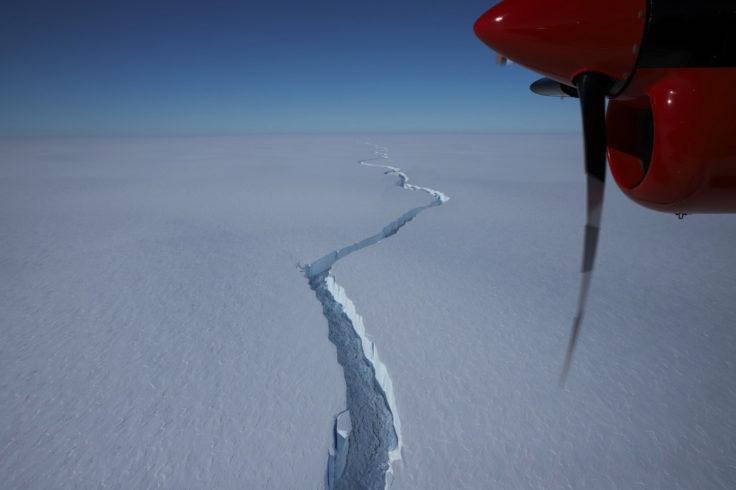
Image of the North Rift crack on the Brunt Ice Shelf in Antarctica in January leading to an iceberg as large as Los Angeles on Friday. Photo by Andy Van Kints/British Antarctic Society
Feb. 26 (UPI) -- An iceberg the size of Los Angeles broke off the Brunt Ice Shelf in Antarctica on Friday, but chances of it moving a significant distance or running aground are still unknown, according to the British Antarctic Survey.
The iceberg had been slowly breaking away from the Brunt Ice Shelf, a nearly 500-foot-thick floating ice shelf, at about a half-mile per day since January as it pushed northeast. That crack widened several hundred feet in a matter of hours Friday before completely breaking free.
The iceberg covers from 469 to 503 square miles, roughly the size of California's largest city and slightly bigger than New York City's 468 square miles.
Jane Francis, director of the British Antarctic Survey said her team had been monitoring the ice shelf daily using an automated network of high-precision GPS instruments that surround its Halley Research Station. The devices measure how the ice shelf was deforming and moving.
The team also used satellite images from the European Space Agency and NASA along with the German satellite TerraSAR-X.
"Our teams at BAS have been prepared for the calving of an iceberg from Brunt Ice Shelf for years," Francis said in a statement. "Over the coming weeks or months, the iceberg may move away; or it could run aground and remain close to Brunt Ice Shelf."
The research station is located inland from all the active chasms and remains connected to the continent. She said their instruments would give them early warning if a new iceberg creates any changes around the station.
Simon Garrod, director of operations at British Antarctic Survey said the team moved the station inland to make sure it would not be carried away when an iceberg eventually formed.
"That was a wise decision," Garrod said. "Our job now is to keep a close eye on the situation and assess any potential impact of the present calving on the remaining ice shelf. We continuously review our contingency plans to ensure the safety of our staff, protect our research station, and maintain the delivery of the science we undertake at Halley."
No comments:
Post a Comment